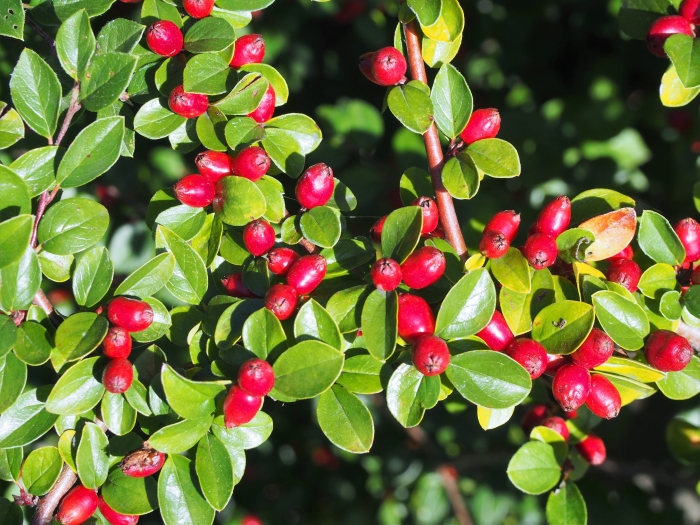Spreading Cotoneaster
(Cotoneaster divaricatus)
Spreading Cotoneaster (Cotoneaster divaricatus)
/
/

Agnieszka Kwiecień, Nova
CC BY-SA 4.0
Image By:
Agnieszka Kwiecień, Nova
Recorded By:
Copyright:
CC BY-SA 4.0
Copyright Notice:
Photo by: Agnieszka Kwiecień, Nova | License Type: CC BY-SA 4.0 | License URL: https://creativecommons.org/licenses/by-sa/4.0 | Uploader: Nova | Publisher: Wikimedia Commons | Title: Cotoneaster_divaricatus_Irga_chińska_2019-09-15_02.jpg | Notes: Transferred from Flickr via #flickr2commons |




























































Estimated Native Range
Summary
Cotoneaster divaricatus, commonly known as Spreading Cotoneaster, is a deciduous shrub native to rocky hillsides and open woodlands in China. It has been introduced to various regions including Ontario, Canada, the Midwest United States, northern and central Europe, Kenya, and the South Island of New Zealand. This plant typically reaches 1.8 meters (6 feet) in height and spreads to 2.4 meters (8 feet) wide. The Spreading Cotoneaster is characterized by its arching branches, small, dark green leaves, and small pinkish-white flowers that bloom in late spring to early summer. The flowers are followed by red berries that persist into winter, providing visual interest and food for birds.
Spreading Cotoneaster is appreciated for its ability to form dense thickets, making it useful for mass plantings, hedges, and erosion control on slopes. It thrives in full sun to part shade and prefers well-drained soils but is adaptable to a variety of soil types, including clay. While it is drought-tolerant once established, moderate watering is recommended for optimal growth. Gardeners should be aware that Cotoneaster divaricatus can be potentially invasive outside its native range due to its prolific seed production and should be planted with caution.CC BY-SA 4.0
Spreading Cotoneaster is appreciated for its ability to form dense thickets, making it useful for mass plantings, hedges, and erosion control on slopes. It thrives in full sun to part shade and prefers well-drained soils but is adaptable to a variety of soil types, including clay. While it is drought-tolerant once established, moderate watering is recommended for optimal growth. Gardeners should be aware that Cotoneaster divaricatus can be potentially invasive outside its native range due to its prolific seed production and should be planted with caution.CC BY-SA 4.0
Plant Description
- Plant Type: Shrub
- Height: 5-6 feet
- Width: 6-8 feet
- Growth Rate: Rapid
- Flower Color: N/A
- Flowering Season: Spring
- Leaf Retention: Deciduous
Growth Requirements
- Sun: Full Sun, Part Shade
- Water: Medium
- Drainage: Slow, Medium, Fast
Common Uses
Bank Stabilization, Bee Garden, Bird Garden, Border Plant, Butterfly Garden, Deer Resistant, Drought Tolerant, Groundcover, Hedges, Low Maintenance, Rabbit Resistant, Street Planting
Natural Habitat
Rocky hillsides and open woodlands in China
Other Names
Common Names: Green Cotoneaster, Stretch-Fruit Cotoneaster, Vifte-Dværgmispel, Sparrige Zwergmispel, Cotonéaster À Branches Étalées, Sprikemispel, Diels’ Cotoneaster, Sprikjemispel, Spärrgrenigt Oxbär, Spärroxbär
Scientific Names: , Cotoneaster divaricatus, Pyrus divaricata,
GBIF Accepted Name: Cotoneaster divaricatus Rehder & E.H.Wilson